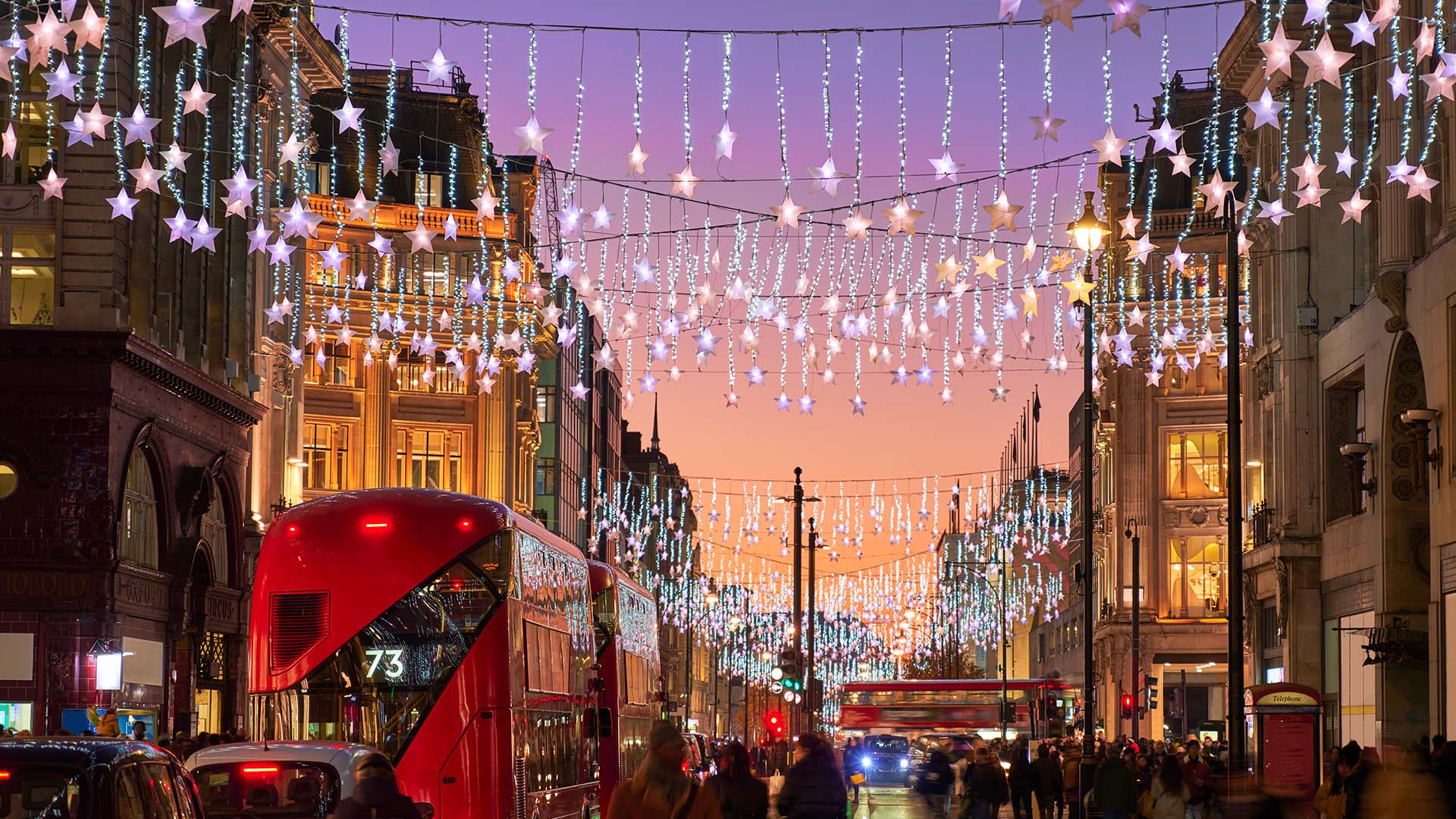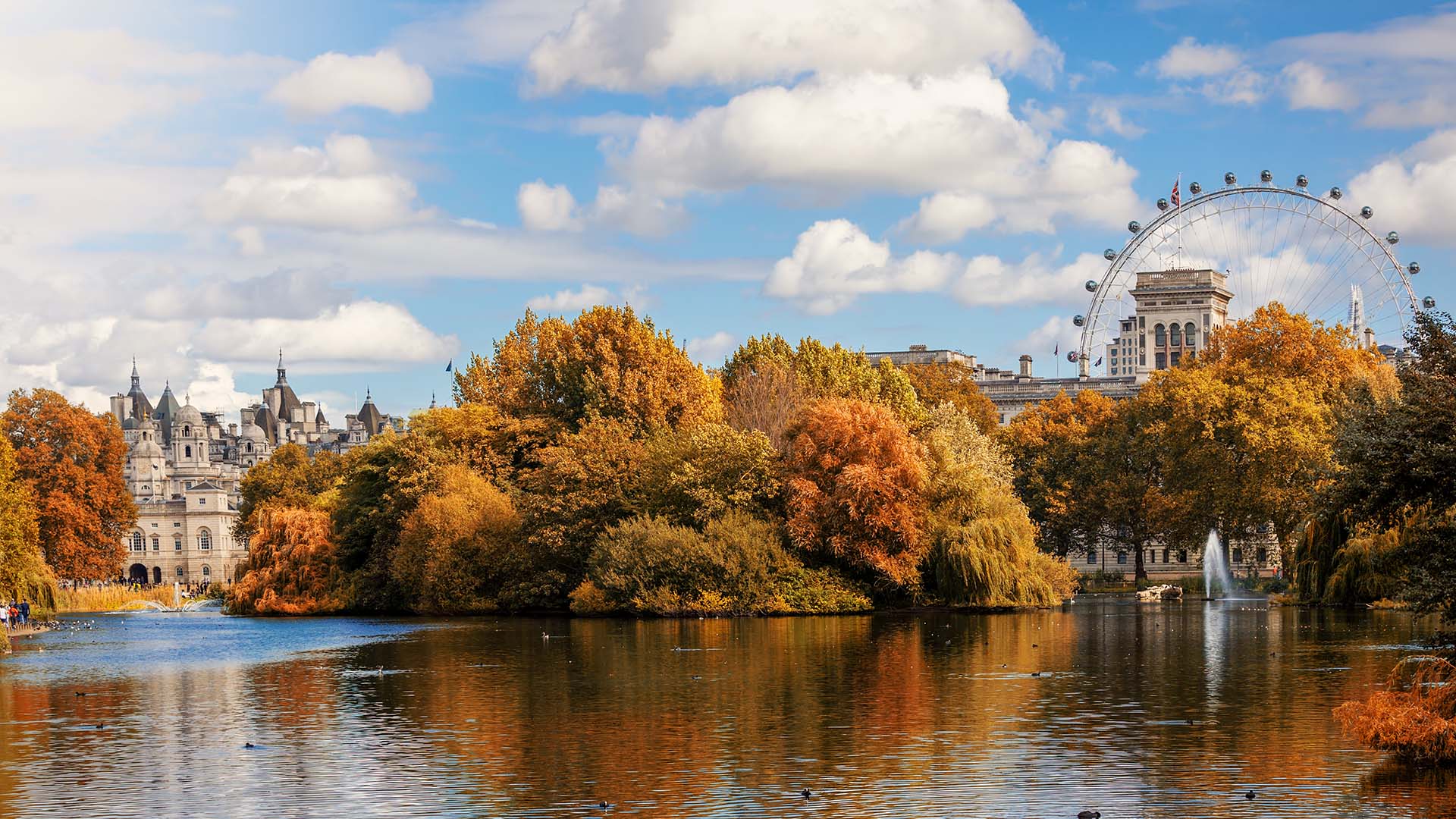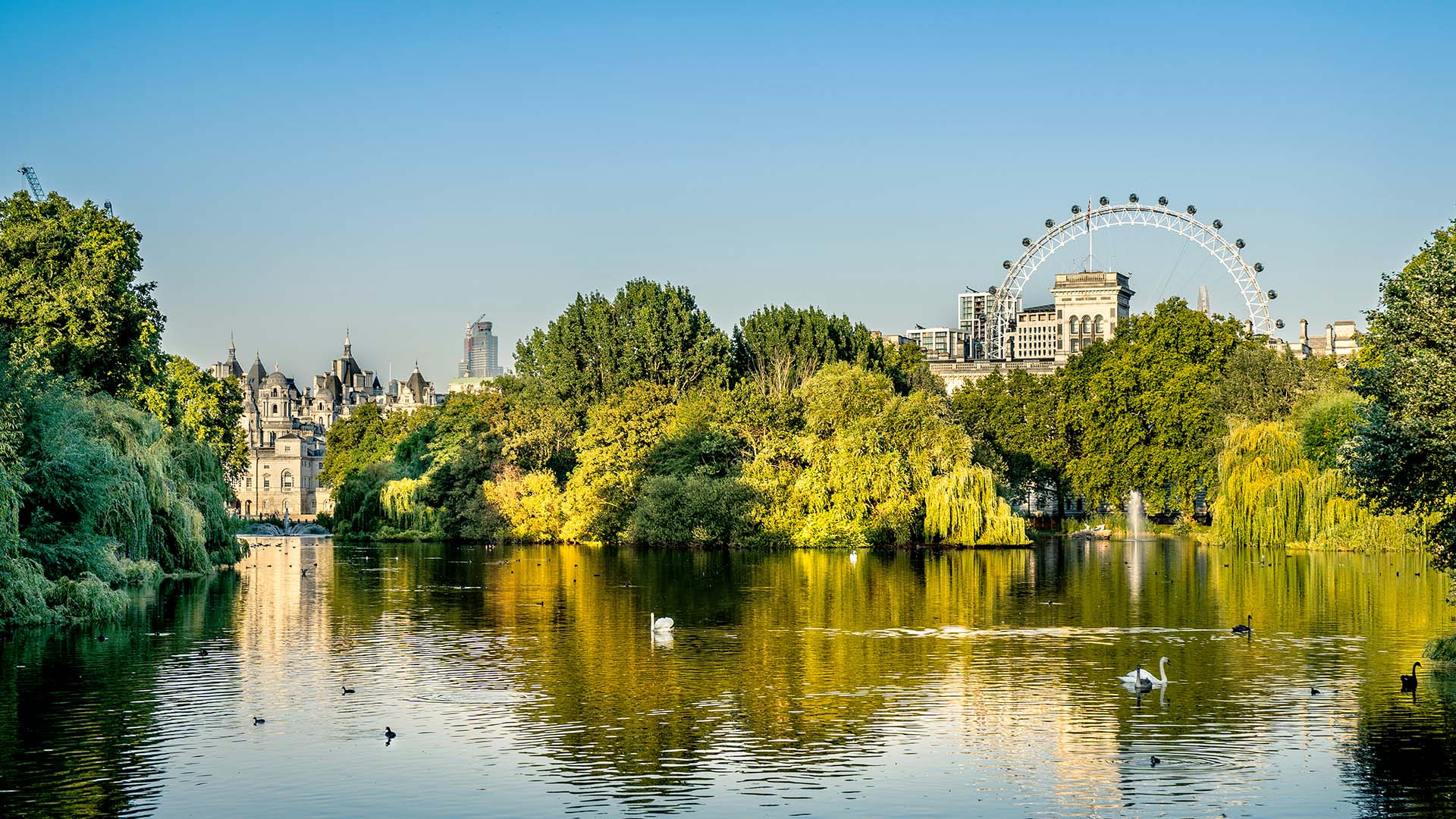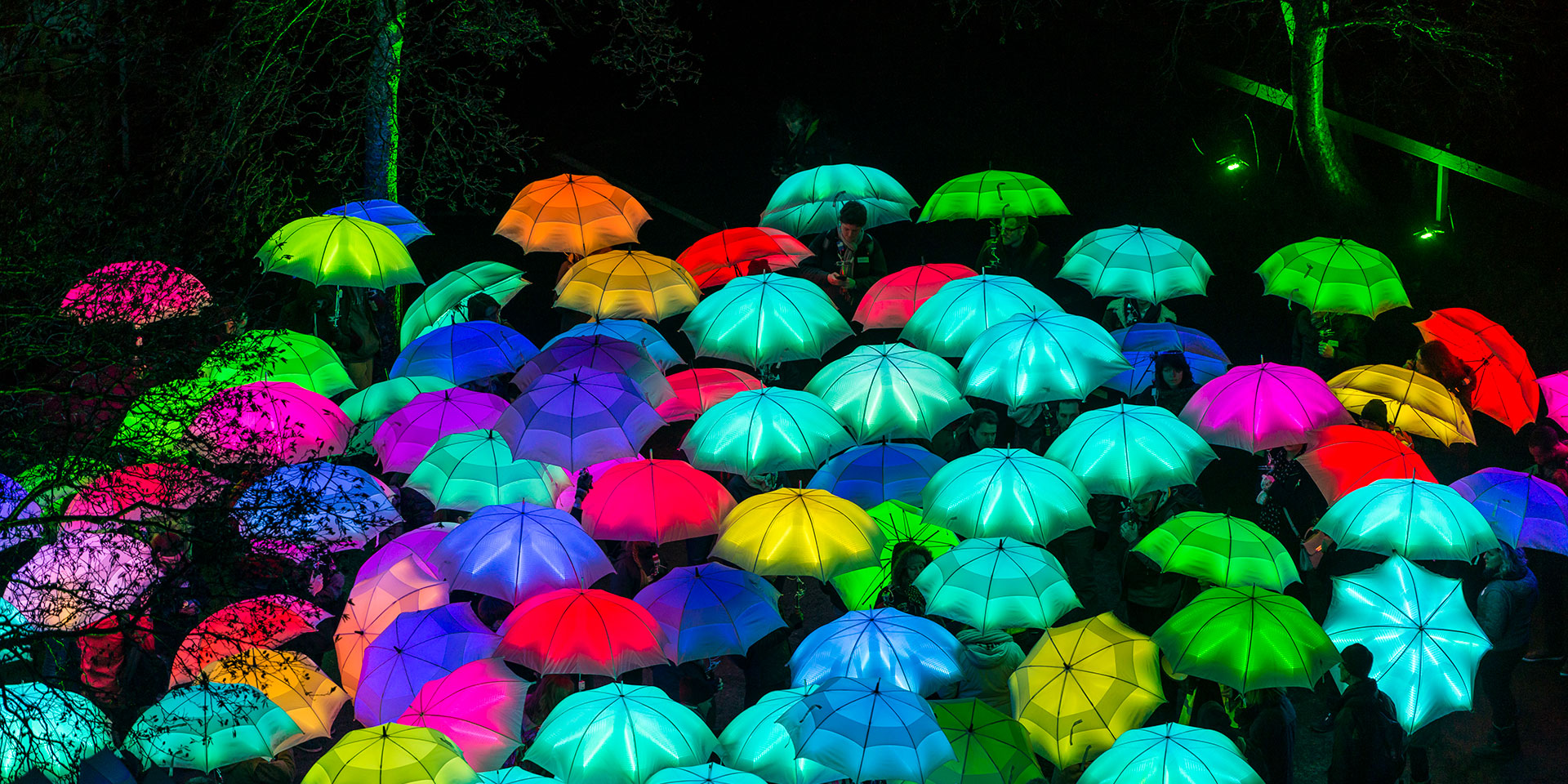
London is one of the great cities that people return to time and again, a town where it’s always possible to experience something new in ever-evolving neighborhoods. Never is that clearer than in late January, when the city’s Lumiere light festival (the largest of its kind in the U.K.) illuminates the capital’s architecture and streets, transforming them into an art show after dark.
But even beyond the festival, it’s easy to get a new perspective — shine a new light, if you will — on a city travelers might think they already know well. For insight, Lumiere’s artistic director Helen Marriage and founder of arts charity Artichoke, guided us through her recent discoveries in the six neighborhoods showcased during the festival.
Waterloo and the South Bank
This area is home to many of London’s big cultural institutions, including the National Theatre and Southbank Centre. Lumiere’s installations are an invitation to stroll along the mostly pedestrianized path from the London Eye to the OXO Tower Restaurant, though the neighborhood’s gems are accessible throughout the year. “It’s a really lovely area to just wander and discover the delights that are there,” says Marriage.
Plan a stroll to visit the Leake Street graffiti tunnel — first made famous by Banksy — a place where “the artwork is always changing, always renewing,” according to Marriage. “Visitors to London don’t know that area so well, but those who are into the arts scene definitely do. There’s a lot of young and emerging artists working there.”
Kings Cross
A few years ago the inner-city district of King’s Cross emerged from one of the biggest developments London has ever seen. Marriage believes that the neighborhood “really sets a benchmark for other development in London. It’s really very classy, in terms of what they’ve done to protect and preserve the old while introducing very contemporary architectural styles.”
Marriage particularly likes the “lovely public open spaces” that have opened. “So if anyone hasn’t been to the new area north of Kings Cross Station, that’s a real treat because you are sort of discovering a completely new world.”
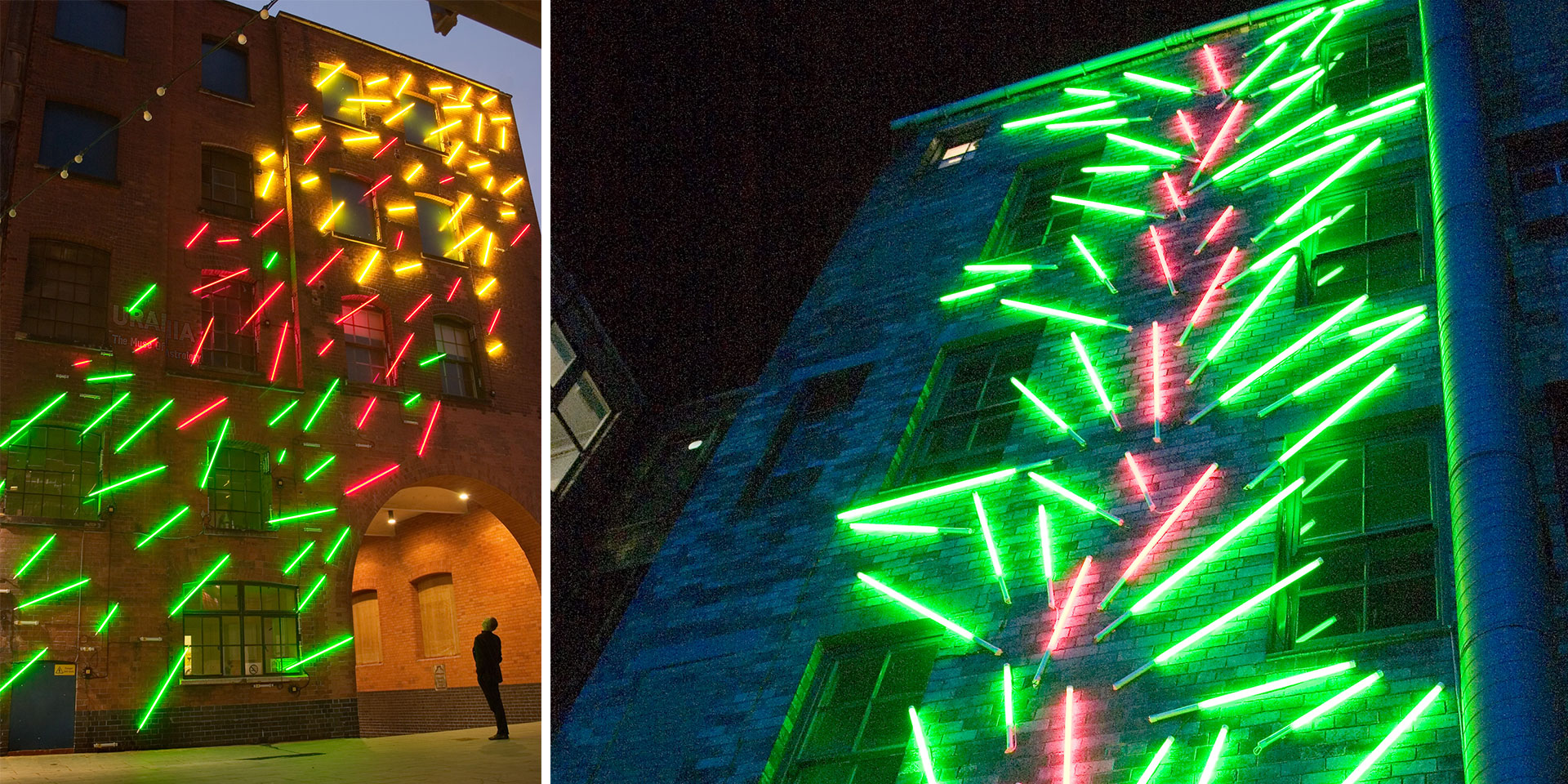
Mayfair
Marriage says that, for many locals and visitors, Mayfair was one of the big discoveries during the 2016 edition of Lumiere. “They found lots of places, cafés and bars, that they’d never normally go to, (and) they found that it’s only a 10- to 15-minute walk from Regent Street, which is much more known.”
While Mayfair is a quite (affluent) residential area, its streets are lovely for a wander. And you might uncover a few hidden gems along the way, such as a plaque to David Bowie’s alter ego, Ziggy Stardust, at 23 Heddon Street (one of just a few London plaques that honor fictional characters). “I think for people who have never ventured into the area,” says Marriage, “that really will be a revelation.
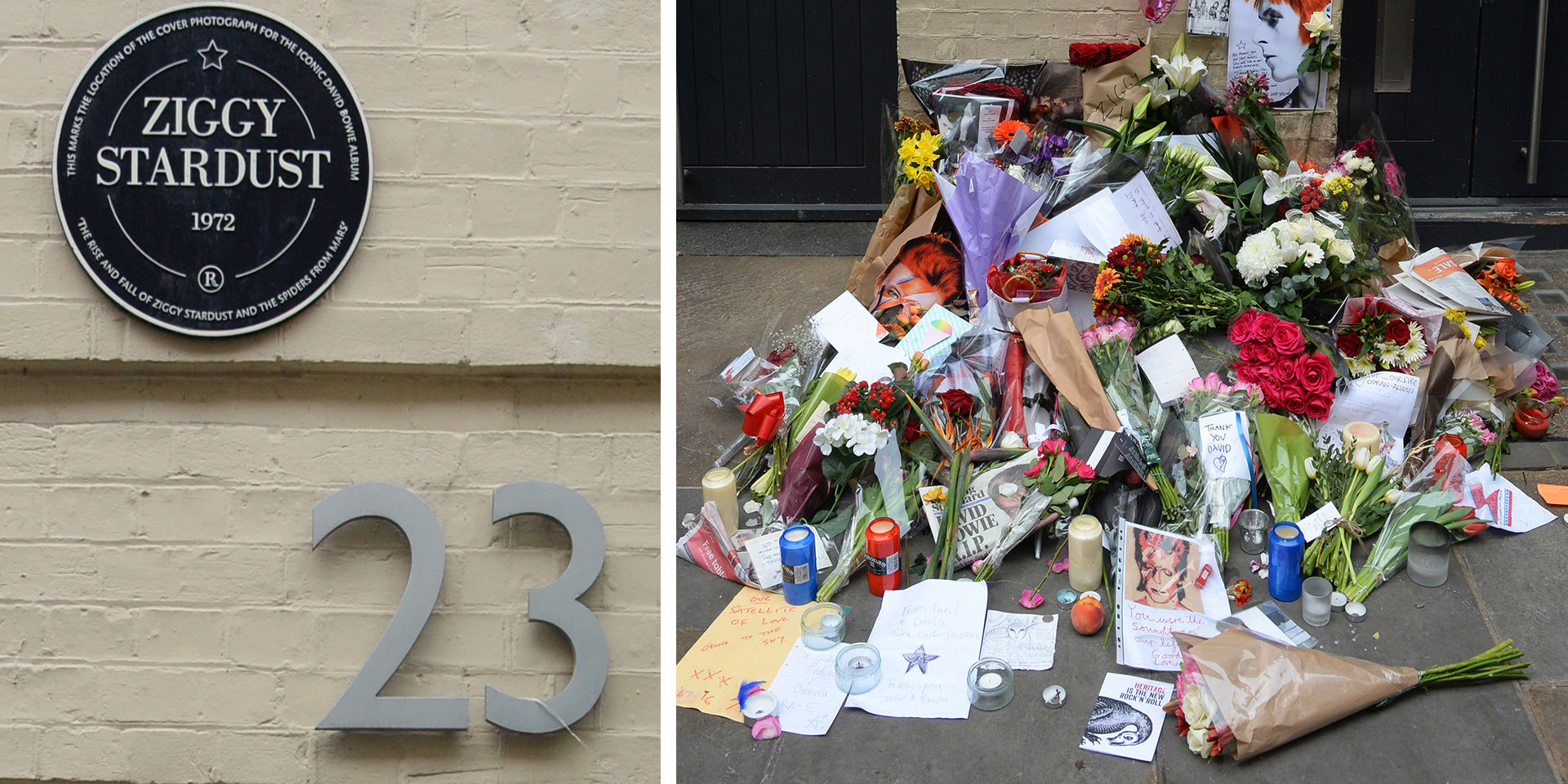
Westminster
Working with Transport for London (TfL) on the festival, Marriage discovered TfL’s walking tube map, “which I don’t think many people know about,” she says. This map of the underground system highlights the walking distances between stations, revealing how close many are to one another.
“That, I think,” says Marriage, “is a really wonderful aid to understanding London.” Armed with this map, visitors will discover that many Westminster sites are within easy walking distance of those in the West End, for example, and beyond.
Encouraging people to walk more jibes with the festival’s aim of getting people to look more closely at their surroundings. Marriage points out that Londoners often walk with their heads turned downward, “So people aren’t really looking up at the magnificent architecture above their heads.”
London’s West End
The bustling West End is filled with tourists and so, for Londoners and frequent visitors, holds relatively little appeal. But the area deserves a closer look. Marriage recommends seeking out the “hidden nooks and crannies and little cut-throughs that you wouldn’t normally go down.”
Rather that sticking to the busy main streets, such as Shaftsbury Avenue, “there are ways to cut from Piccadilly to St James’ Square and then on across to Trafalgar Square, walking through side streets, and that’s a revelation.”
Meandering through the side streets, you might stumble upon hidden bars, such as Experimental Cocktail Club, a buzzing watering hole concealed behind an unassuming door in Chinatown.
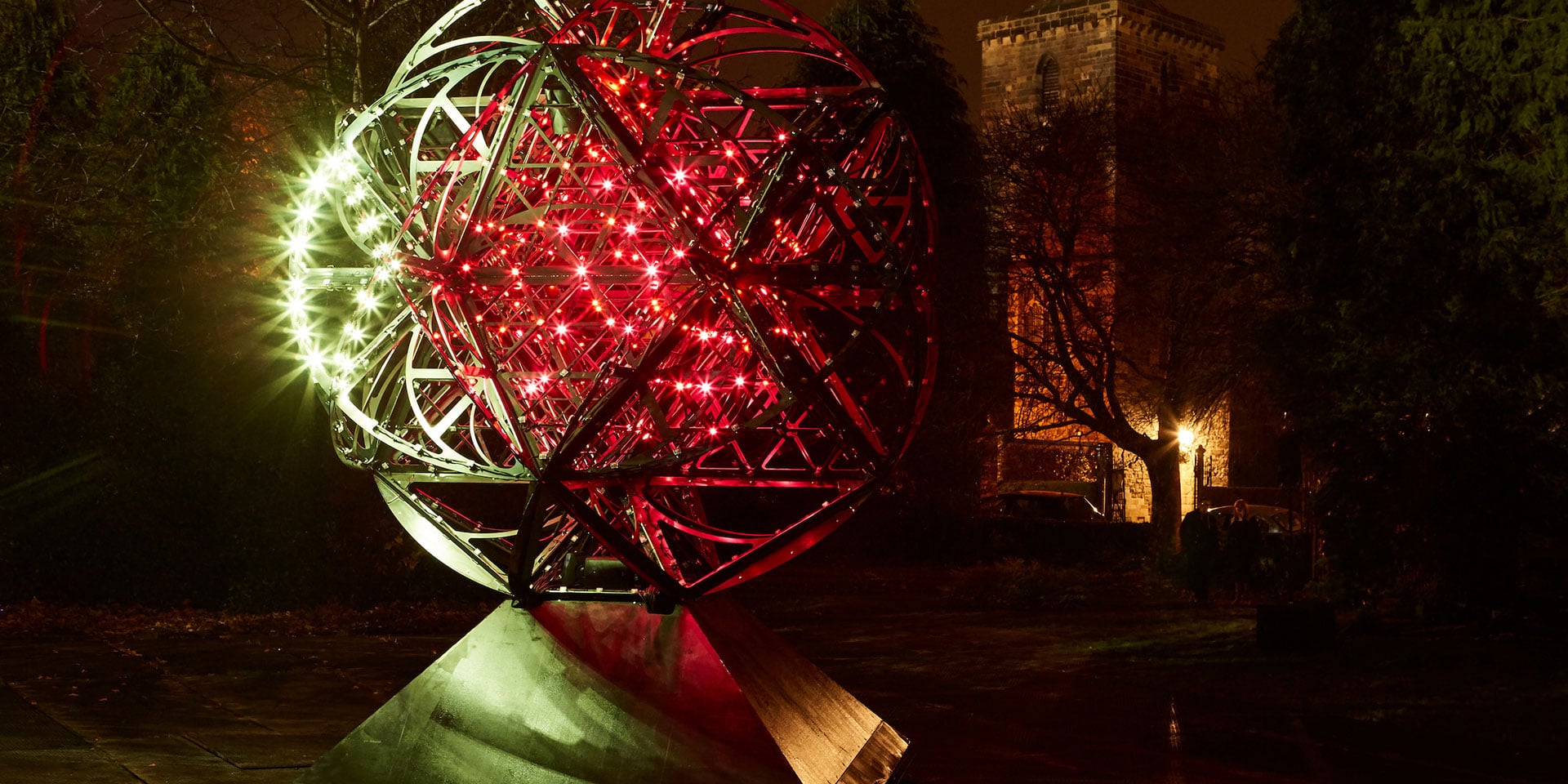
Fitzrovia
While Fitzrovia is heavily connected to the education, medical research and media industries, and thus, largely frequented by those workers, there’s also plenty to offer the casual visitor.
“There’s Fitzroy Square,” says Marriage, “which is a beautiful example of English square building; it’s all pedestrianized and really lovely, as is Charlotte Street, with all those little coffee bars.” Try Lantana on Charlotte Place or the Attendant, a specialty coffee shop, on Foley Street.
On the other side of Tottenham Court Road, Marriage suggests visiting Store Street, which is home to multiple health food stores and has morphed into a “very vibrant, buzzy area.”





